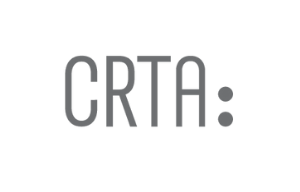The importance of media – is the reach sufficient, and why isn’t it?

The media play a significant role in shaping our attitudes, informing us about current events, and influencing our perceptions of reality. Nevertheless, measuring and assessing the significance of individual media outlets poses a considerable challenge for all stakeholders who are interested in this data. The traditional approach to measuring the importance of individual media has been based on individual indicators such as circulation, number of clicks, or viewership, but often neglects other aspects of the media’s impact on a target audience.
In this context, the basic parameter that is most often used both in the marketing industry and in other fields is reach; in other words, how many people were exposed to an advertisement, media content or message. Reach can be considered a universal ‘currency’ that allows for comparison of different media. However, in order to really understand the importance of individual media outlets, it is necessary to take into account several factors and indicators. It has become increasingly evident that focusing exclusively on this indicator, without keeping other factors in view, can lead to unintended consequences.
One of the problems with an exclusive focus on reach is that this indicator often encourages sensationalist media contents and ‘clickbaits’, because they attract more contacts, but not necessarily deeper understanding or audience engagement. This approach often leads to the collapse of journalistic quality, where content is created only with the aim of attracting the largest possible audience, regardless of the informational value or quality of reporting.
CRTA’s public opinion surveys continuously show that television and the Internet are the main channels of communication with citizens. These pages will therefore display data that indicate the importance of the largest television channels and internet portals in Serbia.
When calculating the importance of the media, it is necessary to discern the target group for which certain media contents are intended. In the description of the importance of the media that follows, the focus will be put on socio-political content, given its exceptional importance in informing citizens. The target group is represented by all adult citizens who have the right to vote (18+). This is crucial because political topics and information directly affect society and shape political decisions.
Three indicators were used to show the importance of the media:
- **Reach:** The number of people within a specific target audience who have spent at least five minutes with a particular television content. Although the market standard for measuring reach is often set to a minimum of one minute of viewing, here the focus is put on a longer duration, namely five minutes, because of the specificity of socio-political and informational content.
- **Attention:** In addition to reach, the presentation of the importance also includes attention, which is represented through the average amount of time the target audience has spent with a particular media content.
- **Loyalty:** Loyalty, which is shown through the number of people who followed media contents on only one outlet, also enters into the presentation of the importance. This factor indicates how loyal the audience is to a particular source of information.
All data collected for television and portals refer to the month of April. The choice of this month was made in order to avoid seasonal fluctuations in the use of media that are characteristic for different periods throughout the year.
Data from the Nielsen were used as a data source for television, while data from the Gemius agency were used for internet portals.
Definition of indicators:
ATS – Average Time Spent, average time spent with certain content on television or internet portals.
RCH – Reach, part of the population of the analysed target group that came into contact with the analysed content on television or internet portals. In the case of television, this contact was supposed to last at least five minutes.
EXR – Exclusive Reach, part of the population of the analysed target group that came into contact with the analysed content on televisions or internet portals, and which did not follow other channels or internet portals during the duration of the show in the case of television or during the day in the case of internet portals.
Coverage – the total cumulative population of the analysed target group that came into contact with the analysed content on television or internet portals. In the case of television, this contact was supposed to last at least five minutes.
Graphic representation of the importance of television
Graphic representation of the importance of internet portals
April 2023
This research is supported by Friedrich Naumann Foundation for Freedom. The opinions expressed in this research are those of the CRTA researchers and do not reflect the opinions of the Friedrich Naumann Foundation for Freedom.








